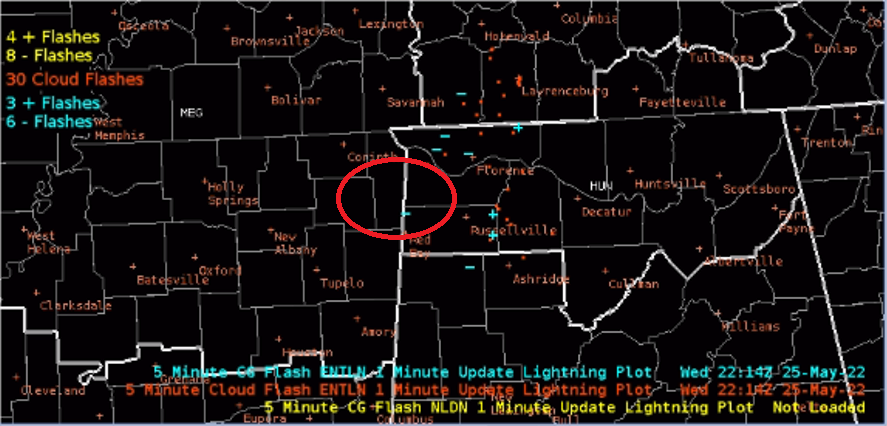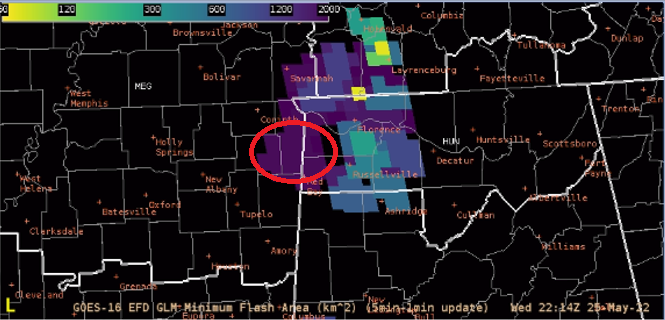Lightning energy during the HWT was introduced in several different ways. Three of these were:
- Flash Extent Density
- Minimum Flash Area
- Total Optical Energy
For monitoring severe thunderstorms, Flash Extent Density seemed to be the most useful of the three.
However, all of the GLM products were what we focused on.
In order to obtain GLM lightning data on the grid or map, you had to obtain a Minimum Flash Area. It was interesting in the stratiform type storms that a wide area was displayed compared to the small area where the flash took place. In this case it was one cloud-to-ground lightning strike (CG).

This image is from the Bottom-Right panel (CG and Cloud Flashes):

This is the top-right panel (Minimum Flash Area):

This shows that one CG Flash can plot a large area on the Minimum Flash Area product. It seemed that this was necessary for other products to plot, such as the Flash Extent Density, but it may be a little bit of a distraction for the operational forecaster as it would seem to flash a bit (on and off if looping it) and for a much larger area than what was shown compared to the cloud Flash and CG plots.
- WeatherTed


